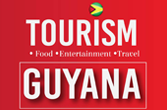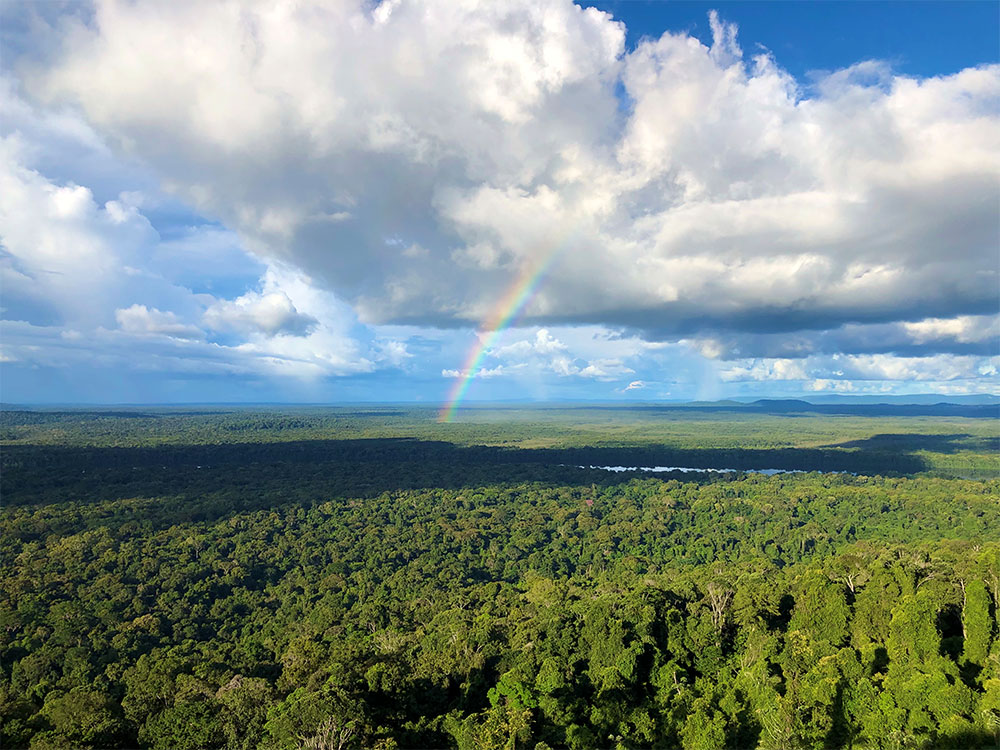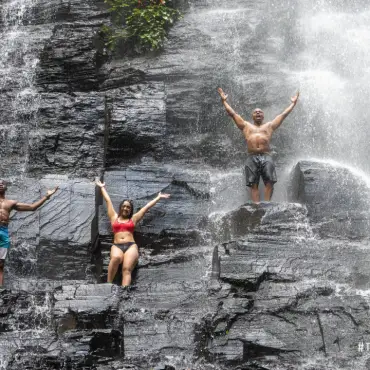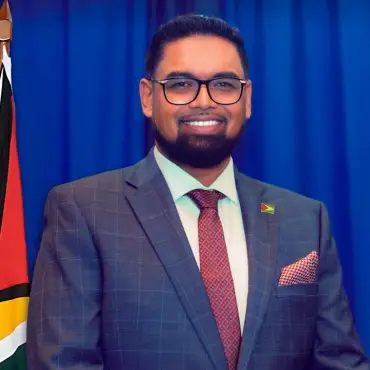– With Operation Wallacea in Iwokrama Forest Reserve
By Sean M. McHugh
My name is Sean McHugh, I am a wildlife biologist and conservationist. In this article I would like to share my experiences conducting research in the ‘green heart’ of Guyana’s interior within the Iwokrama Forest Reserve. My research was through Operation Wallacea (Opwall) a British organization who arranges expeditions across the globe to collect and publish biodiversity monitoring data; with the help of in-country partners and international students. This upcoming 2020 expedition will be Opwall’s tenth anniversary of research in Iwokrama, highlighting a quality relationship which has been beneficial for both parties since the project’s creation in 2010. I was contracted this past summer of 2019 as the Ôlead mammal scientist’, my research objective was to study and collect data on Iwokrama’s large mammal communities. I worked in cooperation with other expert scientist who were collecting data on birds, bats, herpetofauna, insects, and forestry.
 Our expedition began in the lovely capital city of Georgetown where our international team assembled for a two month expedition that would take us deep into the Guyanese jungles. Early on a June morning a group of roughly 40 individuals loaded scientific gear and equipment onto a fleet of buses, everyone was filled with anticipation for the adventures that lie ahead. The 12 hour trek into the interior provides travelers with only one option the ÔLinden-Letham road’, this lone road is considered a right of passage, as it remains primarily unpaved and is always a rugged trek. Our initial destination point was the beautiful Iwokrama River Lodge (IRL), this research station lies on the banks of the Essequibo river, which is the largest river in Guyana also known as ‘the land of many waters’. I worked tirelessly in the coming weeks to place my camera traps across this vast expanse of forest, beginning my monitoring studies of the elusive rainforest mammals which live here. During our research expedition we surveyed six different sites throughout Iwokrama and just south of its boundaries in a beautiful landscape called Surama. The amount of wildlife we observed while in the forest and along its rivers was simply staggering, I have been researching mammals in South America for the past three years, I have not seen an abundance of flora and fauna to this extent.
Our expedition began in the lovely capital city of Georgetown where our international team assembled for a two month expedition that would take us deep into the Guyanese jungles. Early on a June morning a group of roughly 40 individuals loaded scientific gear and equipment onto a fleet of buses, everyone was filled with anticipation for the adventures that lie ahead. The 12 hour trek into the interior provides travelers with only one option the ÔLinden-Letham road’, this lone road is considered a right of passage, as it remains primarily unpaved and is always a rugged trek. Our initial destination point was the beautiful Iwokrama River Lodge (IRL), this research station lies on the banks of the Essequibo river, which is the largest river in Guyana also known as ‘the land of many waters’. I worked tirelessly in the coming weeks to place my camera traps across this vast expanse of forest, beginning my monitoring studies of the elusive rainforest mammals which live here. During our research expedition we surveyed six different sites throughout Iwokrama and just south of its boundaries in a beautiful landscape called Surama. The amount of wildlife we observed while in the forest and along its rivers was simply staggering, I have been researching mammals in South America for the past three years, I have not seen an abundance of flora and fauna to this extent.
The rangers and local communities we work with in Iwokrama and Surama are absolutely critical for the daily operations of our research objectives, their local knowledge of the forests and rivers was humbling to me as a scientist. I learned something new every time we were out on a survey. Typically when I am conducting research in a remote location the food is something I have to adjust to, both the quality and the quantity. However, the meals along with the occasional mug of pine wine was was nothing short of amazing! The guides and rangers would catch fresh fish from the rivers while the cooks would create incredible Guyanese dishes for nearly 40 people. I was astounded by the food we were provided, no other expedition I have been on comes close to the way our team ate whilst in the jungles of Guyana. As the weeks continued my camera traps were able to soak up videos of the cryptic biodiversity that would pass in front of them, reviewing new footage with students and guides is always an exiting moment! We were able to film a number of different Jaguar across the reserve, their presence represents a healthy ecosystem indicative that there is plenty of prey to hunt for these apex felids. In addition to Jaguar the cameras collected a wealth of other wildlife including giant anteater, giant armadillo, white-lipped peccary, puma, ocelot, tapir, and many other ecologically valuable mammals native to the Guyana shield. I also have a fascination for primate behavior and ecology, we were able to observe five different species of monkey across our multiple study sites. The most charismatic primate we encountered was the Guiana spider monkey which is a ‘Vulnerable’ species according to the IUCN and requires highly intact primary forest to survive, they appear to be thriving throughout Iwokrama.

One of our study areas known as Turtle Mountain is a particularly special place, this small mountain rises abruptly from the surrounding lowland rainforest. Its summit is just over 300m in elevation and provides the most breath taking view I have ever seen in my life. At a nice pace you can reach the top in roughly one hour as you climb steadily through the surrounding forest amongst massive boulders which hug the meandering trail. Once at the top you are greeted by a staggering vista; unbroken rainforest as far as the eye can see, this privileged sight has become a rarity in 2020 as tropical deforestation is at an all time high. As we looked over the expansive forest we were immediately greeted by a rainbow, troops of Red howler monkeys, and three different species of Macaw which flew past us at eye level.
Guyanese rangers will tell you ‘if you drink the tannic waters of the jungle streams and eat the Laba’ (also known as Paca) you will return to the country in search of more adventures. I willingly participated in both of these rituals while working in the interior, I am already planning on returning for additional research during the 2020 expedition season. There is a special charm about Guyana that makes you want to return to see more of its outstanding landscape and unique culture. For me this hidden gem of a country is something that all adventures must experience for themselves, it’s my favorite country I have visited to date.





Add Your Comment